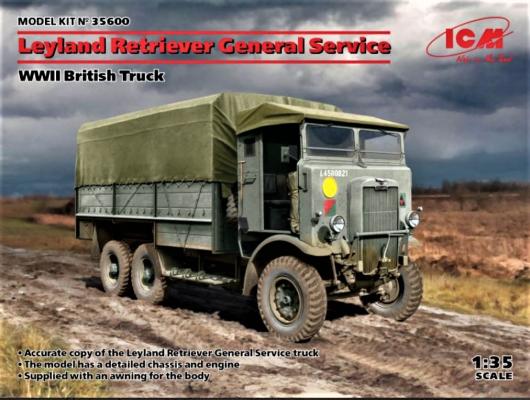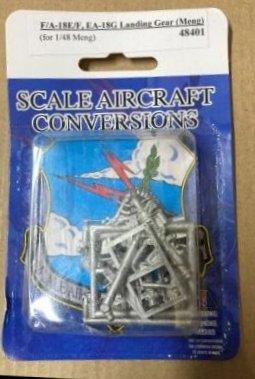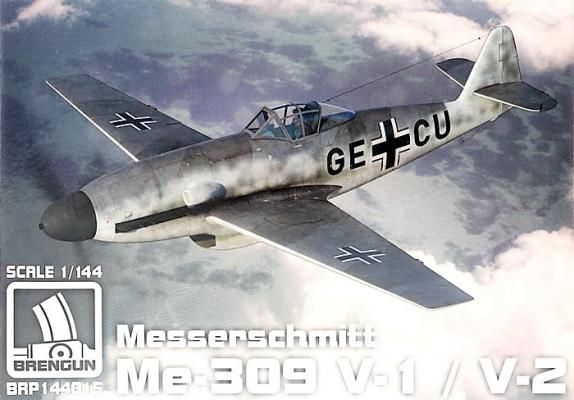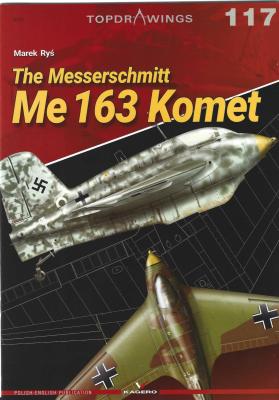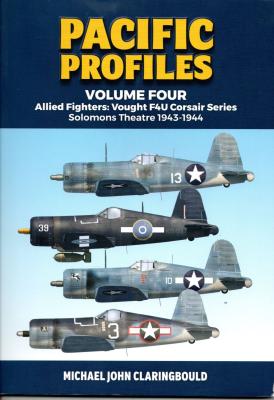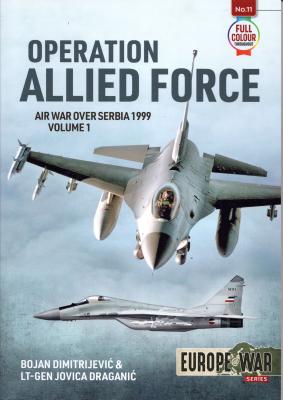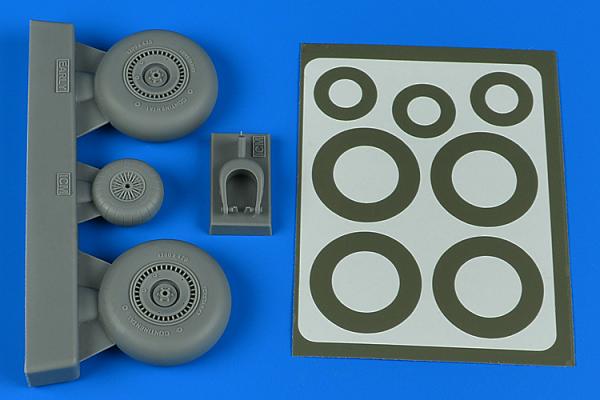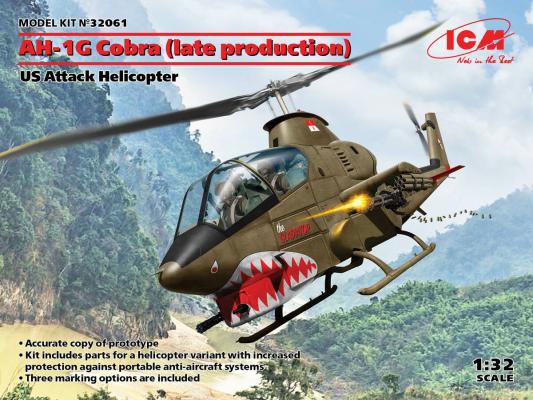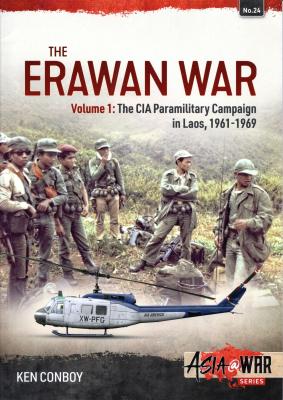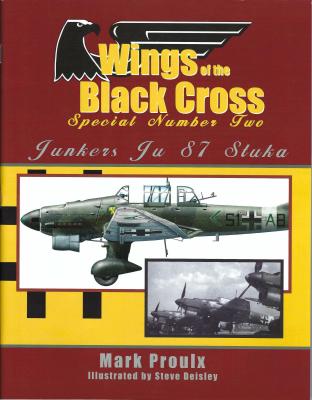The Leyland Retriever was a 6x4 general utility lorry manufactured by Leyland Motors between 1939 and 1945. Roughly 6,500 were produced for the British Army during that period, and they served on all fronts and in a number of guises, one being General Montgomery’s caravan and also a fully armored version. Personally, I’ve always liked this beast, as it has a distinct WW1 feel to it and couldn’t be more basic – the cabin seats, for example, being nothing more than wooden tool boxes.
What's New
Thanks again to our steadfast IPMS supporter, Ross at SAC… and to IPMS leadership for providing it to me for review. Metal gear frequently makes a difference in the longevity of your efforts in modeling, and Ross and his team are supporting us!
This set simply replaces the main and nose gear for the new Meng F-18E through Growler series. Although Meng plastic is pretty sturdy, and the kit gear will serve the purpose out of the box, the simplicity of installing metal gear on the assembled airframe with a trailing-strut arrangement is a worthwhile effort.
19 Parts include two main gear struts with extension and drag/retraction arms incorporated, and a nose gear with the catapult arm and control rods. As stated before, Meng’s plastic is admirably durable, but the landing gear is still vulnerable to gravity.
The Messerschmitt Me-309 was envisioned as a replacement for the Me-109 in late 1940. The aircraft was to feature a pressurized cockpit, a fully retractable, tricycle undercarriage and a variable geometry radiator. The Me-309 was never to become much of a priority for the powers that be owing to the success of adapting the Me-109 to larger engines and heavier armament and the Focke Wolf 190 coming into service. Four prototypes (V1-V4) were constructed with flight testing continuing into the last quarter of 1943.
The book provides great detail drawings of the Messerschmitt Me 163 Komet. This was the first Rocket powered fighter used by German Air Force in WWII.
I found the drawings in this book to be fascinating and very detailed, ideal for any modeler as reference materials.
Along with the many outline drawings (in 1/48 & 1/72 scales in the main pages) there is also very nice profile drawings. There are loose scale drawings in 1/32 scale. The drawings cover many versions of the aircraft.
I recommend this book to everyone with an interest in the armor and a must for modelers.
Thanks go to Casemate Publishing for providing this book to review and IPMS USA for allowing me to review it for them
“Pacific Profiles” is a series of books that covers various military aircraft serving in the Pacific during WWII. This book is volume four, Allied fighters: Vought F4U Corsair Series, Solomons Theatre 1943-1944. The book size is paperback and about 7 inches by 10 inches in color and black & white.
The book starts out with technical information, color schemes and markings as well as maps of the Solomon airfields. There are a few charts showing USN/USMC and RNZAF corsair units and their timeline when they were in service. At the end of this section are full color images of Corsair squadron and service insignia/patches featured in this book along with a glossary of terms.
This book “Operation Allied force, air war over Serbia 1999” is volume one of a two volume book series. There are two authors who both held opposing positions during this war with front line service. This volume (1) covers the chronology of events while the next volume (2) focuses of the experiences from both sides in the air war.
The beginning of this book covers the rise of the Federal Republic of Yugoslavia (FRY) air force. From buildup of assets, restrictions put on the new air force equipment and tables showing air asset with locations of these assets. Deeper into the book, it covers conflicts, notable air engagements, buildup of NATO forces and defenses.
The Do-217N is a unique version of the venerable Do-217. Designed as a night fighter it was really just too slow to catch the bombers. It wasn’t useless but it did have its share of problems.
ICM released their kit of this airplane in 2020. It was a nice kit, but it was not without a few mistakes, as all models are. One of those mistakes was slightly undersized wheels. Also the wheels did not have a bulge or flat spot to indicate weight being on the landing gear. Another area that could use improvement was the tail wheel fork which is slightly anemic and mishappened. Well Aires has a solution.
Before I begin this review I think it is important to know that I flew Cobras in the Army and now fly them with the Army Aviation Heritage Foundation, so I am intimately familiar with them. So I tend to be a little bit of a nit picker or rivet counter when it comes to Cobras. Please forgive me.
When ICM released the AH-1G Cobra in 1/32nd scale there was much rejoicing in the helicopter modeling world. We had waited so long for a replacement for the venerable Revell AH-1G. The Revell kit was released in 1968 and it was very basic. Accurate in outline but lacking in any detail. It needed lots of aftermarket to bring it up to speed. Would ICM be better? Oh heck yeah.
“The Erawan War, The CIA Paramilitary Campaign in Laos, 1961-1969” is volume one of a two volume set. The second volume covers the years 1969 through 1974. The book starts out by setting the stage in 1960 where Laos was a neutral buffer zone between communist and western nations. With a near bloodless coup in Laos, the need of an intervention by the CIA to aid rebels was needed. This book covers the timeline and details of the CIA in Laos for most of the Vietnam conflict. Participants or groups are listed in the text and in an abbreviations section which include the anti-Communist “Royalist Armed Forces” (FAR), Peoples Army of Vietnam (PAVN), Central Intelligence Agency (CIA) and “Air America”.
Eagle Editions is synonymous with Luftwaffe subjects so it comes as no surprise that their latest book in the Wings of the Black Cross series is an airplane that just evokes memories of the Luftwaffe, the iconic Ju-87 Stuka. The name and the noise of the airplane became a symbol for Luftwaffe dominance of the air in the early part of the war. By the Battle of Britain, it was grossly outclassed and obsolete, yet is soldiered on until the very end of the war.

